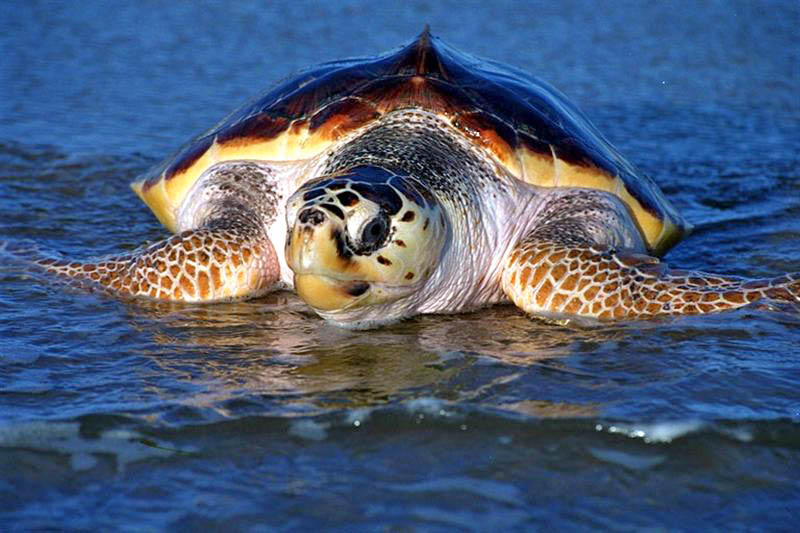Welcome to the Sea Turtle Facts & Protection Learning Section

SEA TURTLE FACTS & PROTECTION - Of the seven species of Chelonioidea, known as the sea turtles, all are listed on the IUCN Red List of Endangered Species as either "endangered" or "critically endangered". Although sea turtles usually lay around one hundred eggs at a time, on average only one of the eggs from the nest will survive to adulthood. While many of the things that endanger these hatchlings are natural, such as predators including sharks, raccoons, foxes, and seagulls, many new threats to the sea turtle species have recently arrived and increased with the ever-growing presence of humans.
Marine pollution is both directly harmful to sea turtles as well as indirectly, through the deterioration of their natural habitats. Some of the most dangerous ocean pollutants include toxic metals, PCBs, fertilizers, untreated waste, chemicals, and a variety of petroleum products. Oil spills are particularly dangerous to sea turtles. Although oil does not tend to stick to them as it does to other marine life, sea turtles are still at risk when they surface for air, where oil can get in their eyes, skin, and lungs which can lead to significant health problems. Even if they are not directly in contact with marine pollution, sea turtles can still ingest harmful chemicals through the food they eat. Oil is also a cause for the death of seagrass, which is a large staple in the diet of the green turtle.
We ask you to please donate to the Big MaMa Earth Learning Academy an environmental solution based non-profit. Your donations will be utilized for continuing education and support for “Sea Turtle Protection” and other important issues.
Please click the Icon’s below to view “Video’s” & “Photos”, review “Scientific Information” and be part of the “Solution”. “Your Future is NOW!”







